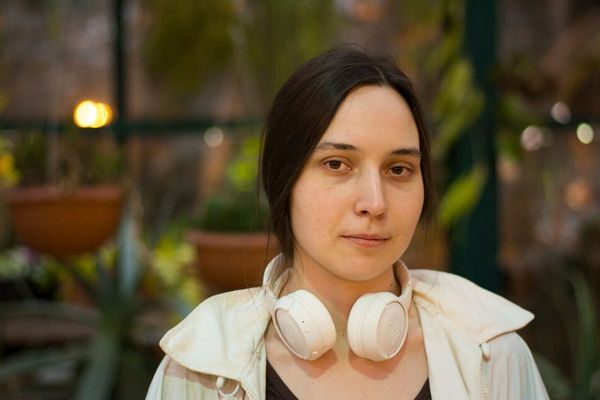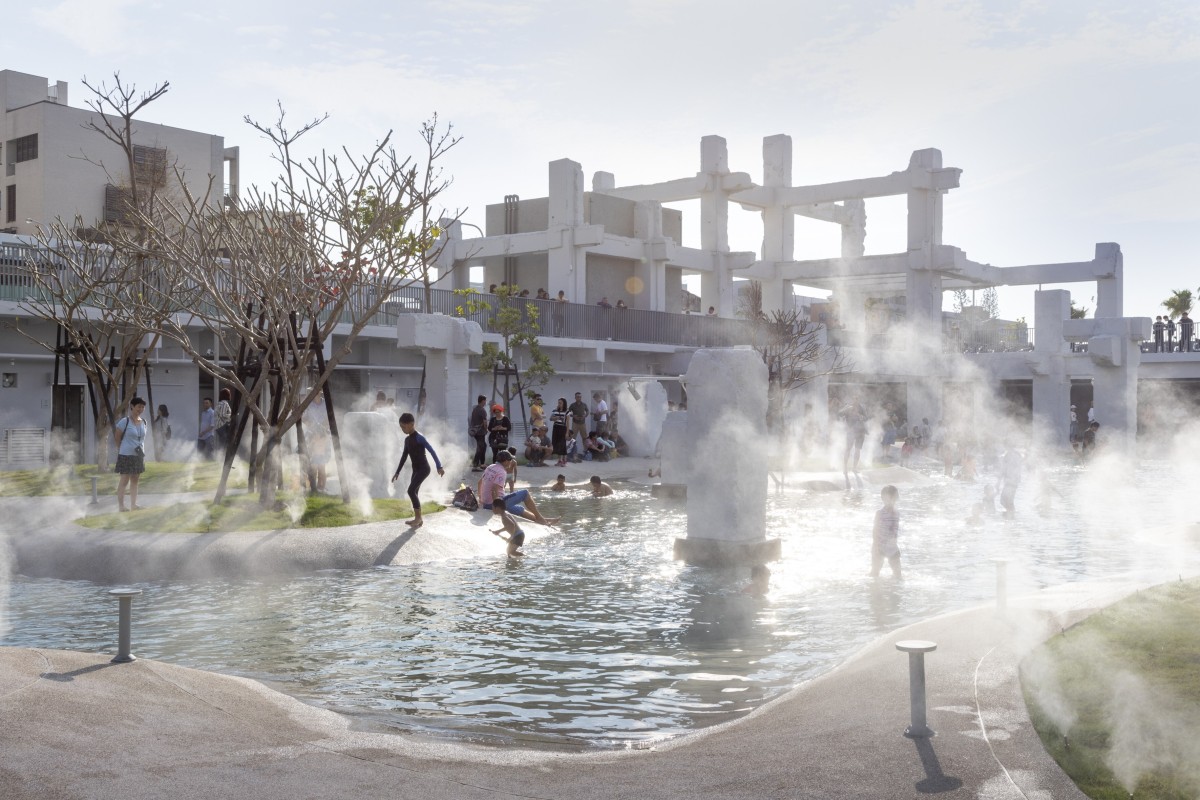
It’s a term that has become familiar to many people around the world: “dead malls”. As online shopping picks up speed and the global retail landscape is transformed, a growing number of shopping centres are being sucked of life and energy. The novel coronavirus pandemic may only accelerate the trend.
So many of these malls sit abandoned in the United States that business analysts have described the situation as a “retail apocalypse”. In March, photojournalist Seph Lawless published a book, Abandoned Malls of America, that documents his visits to more than 200 dead malls.
But in Taiwan, one such mall has found new life as something entirely different. Designed by Dutch architecture firm MVRDV, Tainan Spring turned an old shopping centre into a public water park that makes creative use of the mall’s concrete foundations.
The China-Town Mall was built atop an old fishing harbour next to the Tainan Canal in 1983. “It drained the vitality of downtown Tainan for decades,” says MVRDV founder Winy Maas. “I envisioned [the water park] as a way to review and recycle an architectural mistake.”

The park spans 54,200 square metres (583,400 square feet) and was completed at the beginning of this year. Its current form took shape thanks to a happy accident.
“The mall was originally intended to be demolished completely,” says Maas. “However, since there was no domestic precedent and no insurance company willing to underwrite [the demolition], the mall finally was dismantled by excavators instead.”
Because the mall had been built on top of water, “dismantling [had to] be done very carefully, using the strategy of deconstructing while backfilling”, says Maas. The backfilled debris was piled up beneath the structure and part of the mall’s concrete frame was preserved to accommodate the park.
“I saw the old structure as a unique opportunity for us to create something amazing,” he says. “It took some effort to convince the client, Tainan city, that we could create beauty from keeping the structure.”
The result is a sunken plaza containing a huge paddling pool that was installed on the mall’s underground car park. A glass floor reveals the debris piled up underneath and concrete pillars give the space an epic, ruin-like landscape – “like a contemporary Roman forum”, says Maas.
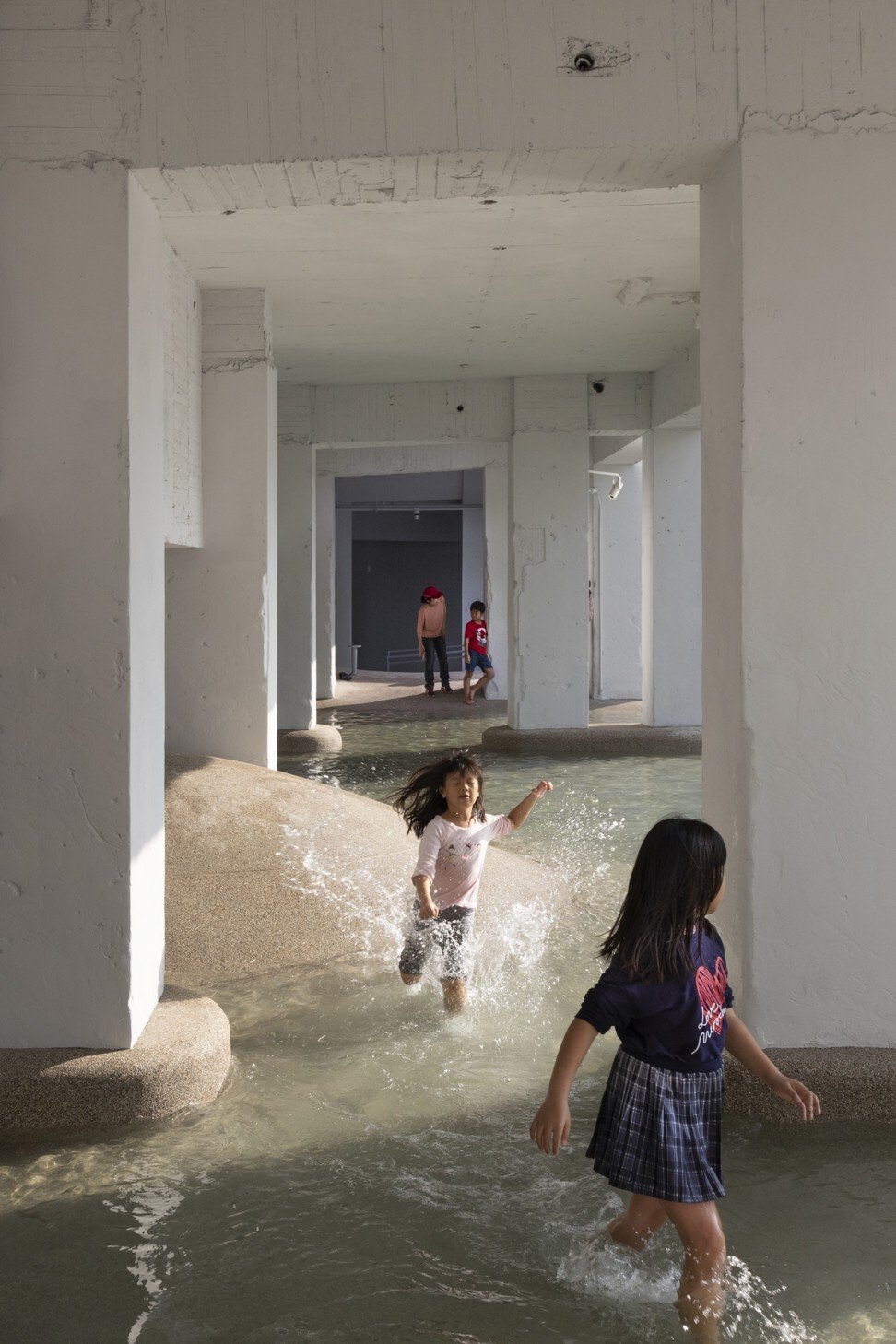
“Children [are] swimming in the ruins of the past: how fantastic is that? It proves that it doesn’t always have to be majestic opera houses and extravagant museum buildings that put a city on the map. You can also take something away to create value.”
Sinuous bands of greenery weave around the pool and a few lush islands have been planted in the midst of it. “The landscape around Tainan is rich, very green and diverse, but this is hardly reflected in the city,” says Maas. “My intention was to bring nature and cooling into the centre of Tainan – a hot city, especially in summer – and to make a true oasis in the midst of the city.”
The pool has a seasonal dimension. Its water level is designed to rise in the rainy season and fall during dry months. Additionally, there are exposed areas where visitors can soak up the sun when it isn’t too hot, and when temperatures rise above 30 degrees Celsius (86 degrees Fahrenheit) – which is the case for more than half the year – they can cool off under misters or in the sheltered gathering spaces that ring the sunken plaza.

Like a number of recent MVRDV projects, Tainan Spring incorporates multiple layers of activity: the sunken plaza; street-level open spaces; and a one-storey pavilion with a rooftop the public can access.
MVRDV took a similar approach to its design for the upcoming Shenzhen Terraces, a large mixed-use development in Universiade New Town in the Longgang district of Shenzhen, southern China, with several floors of sky decks and rooftop gardens, and the Tainan Market, a wholesale market with an undulating terraced rooftop garden, which is currently under construction east of Tainan.
Maas says he likes the variety offered by these kinds of layered spaces.
“It offers users multiple uses and varied visual experiences, to see and to be seen,” he says. “I am fond of levels. The horizontal lines of the levels contrast with the vertical lines of the surrounding tall buildings, which brings a sense of calm and peace due to the slow curving shapes. This has the effect of creating an urban-theatre-like space, where you can overlook the beauty of the valley.”

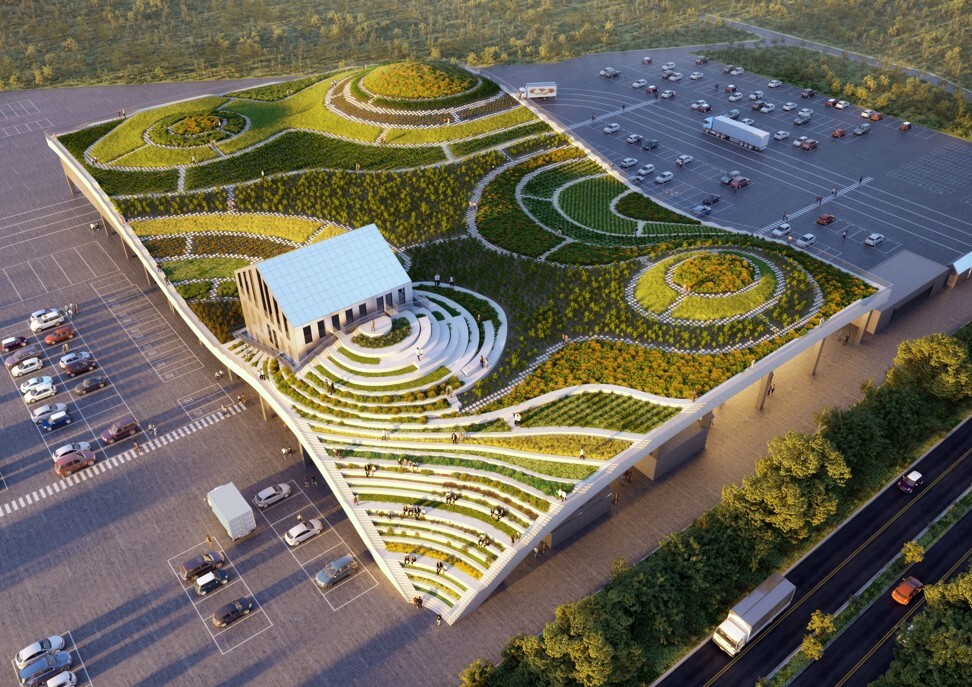
Maas says these kinds of outdoor spaces – whether it’s a public plaza, a market or an entire neighbourhood – will be essential in a post-coronavirus world. “What we learn from Covid-19 is that we need green spaces more than ever, where people can relax, breathe and play sport,” he says.
“In open space with good ventilation, good management on site, [crowd] control, and awareness of people”, controlling the virus will be easier.
Old shopping malls could be the perfect test subjects for such transformations. MVRDV is already working on turning one of the biggest urban shopping centres in Europe, La Part-Dieu in Lyons, France, into a series of “outdoor living rooms”, says Maas.
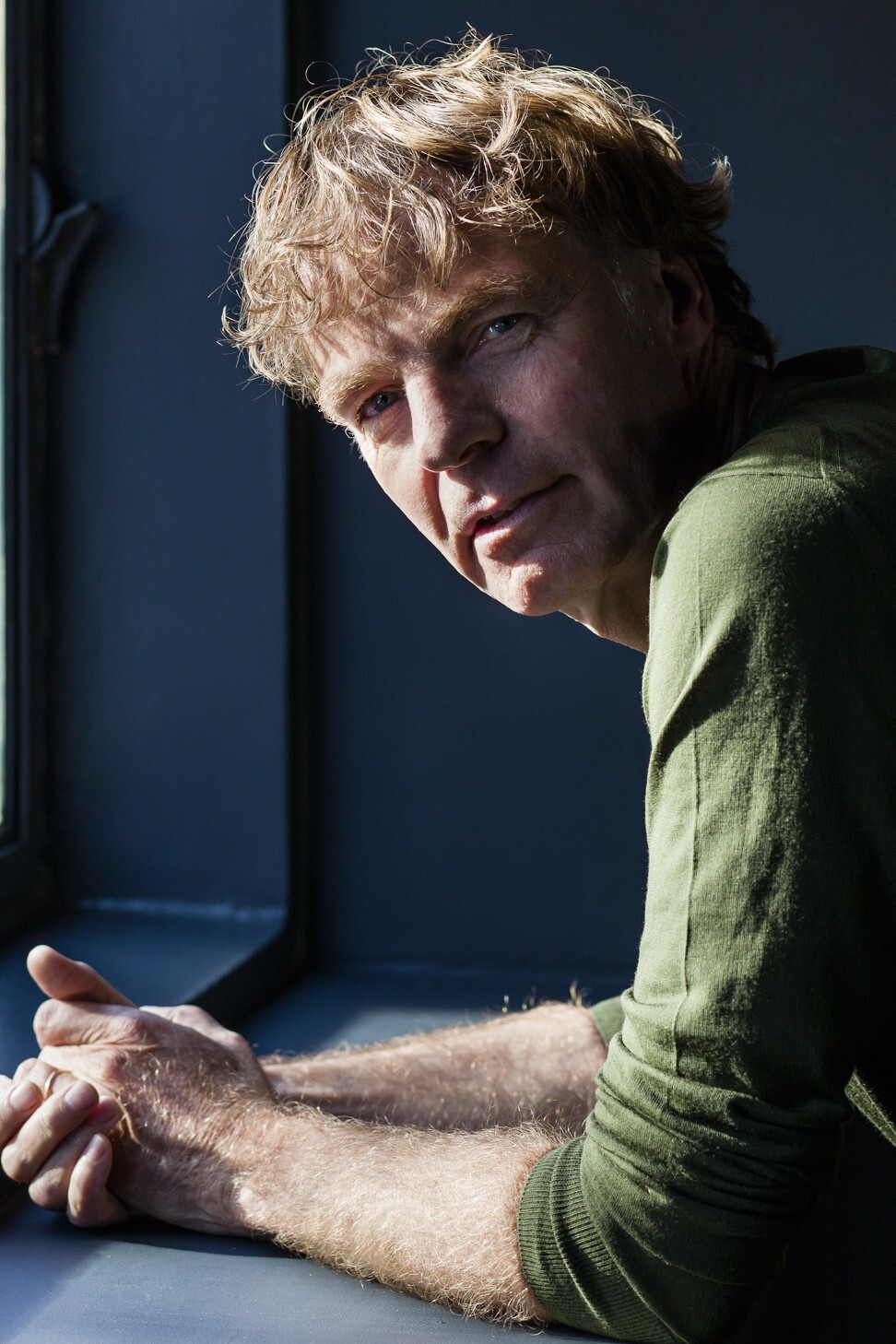
Even if online commerce and health concerns deal a blow to traditional malls, he says, there is still a need to create places where people can gather. “The need for socialising, intimacy and play is in everyone’s DNA,” he says.


